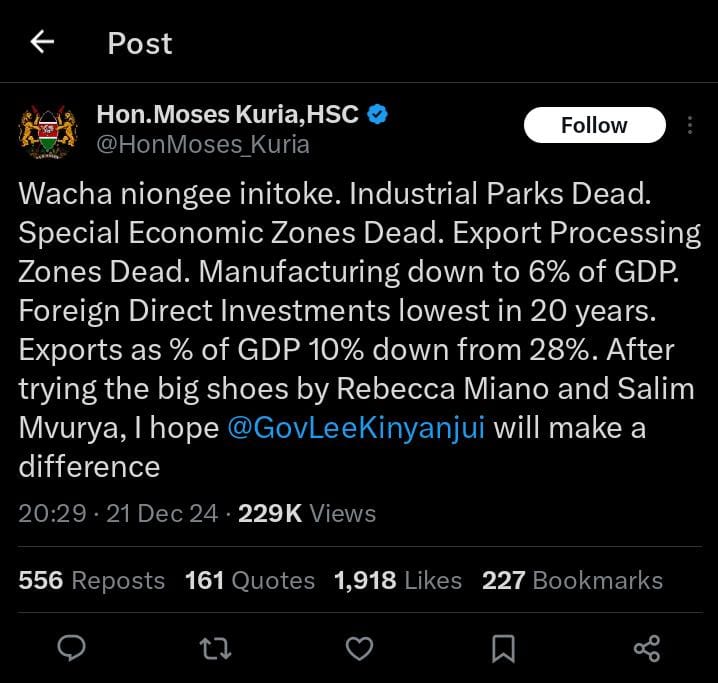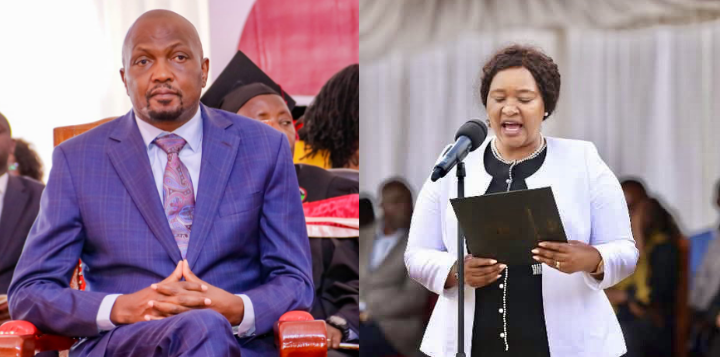Rebecca Miano’s two-year tenure as Cabinet Secretary for Trade has come under sharp criticism from President William Ruto’s economic advisor, Moses Kuria, for overseeing what he describes as the systematic failure of key projects within the ministry.
In a recent statement, Kuria highlighted the dismal performance of flagship initiatives, painting a grim picture of Miano’s legacy in the ministry.
The Special Economic Zones, for instance, were expected to attract foreign investments and boost manufacturing, yet their progress has been negligible.
The manufacturing sector, which was heralded as a pillar of Kenya’s Vision 2030, has also been in decline.
According to Kuria, its contribution to the GDP dropped to a meager 6%, far below expectations.
The lack of tangible progress in boosting the sector underscores the failures of leadership under Miano’s tenure.

Foreign Direct Investments (FDI), which are critical for economic growth, reached their lowest levels in two decades, a damning indictment of the Trade Ministry’s inability to create a conducive investment environment.
Exports, which were once a big contributor to the GDP at 28%, have nosedived to 10%.
This regression reflects poor trade policies, lack of strategic partnerships, and the absence of innovation in expanding Kenya’s export markets.
Critics argue that Miano’s tenure was more focused on public relations than implementing practical solutions to the challenges facing the ministry.
She often highlighted lofty plans in media briefings, yet these initiatives failed to translate into measurable outcomes.
The appointment of Rebecca Miano as Trade CS had raised hopes due to her prior experience as CEO of KenGen.
However, her tenure had been characterized by a lack of tangible results.
While she focused on announcing grand plans and showcasing optimistic projections, the real picture painted by economic indicators tells a story of neglect and incompetence.
Kuria’s remarks suggest that her focus on public image came at the expense of actual delivery.
The repeated failures of flagship projects, coupled with the decline in key economic metrics, are indicative of a ministry that was running on empty.
Stakeholders in the trade and industrial sectors have also expressed concerns over the missed opportunities and poor prioritization during her tenure.
Now that former Nakuru Governor Lee Kinyanjui has been brought into the fold, expectations are high for a turnaround.
Kuria’s statement underscores the urgent need for reform and revitalization in a ministry that has been left in tatters.
With such glaring setbacks, it is clear that Miano’s leadership left the ministry in worse shape than she found it, leaving behind a legacy of unfulfilled promises and wasted potential.





















Add Comment